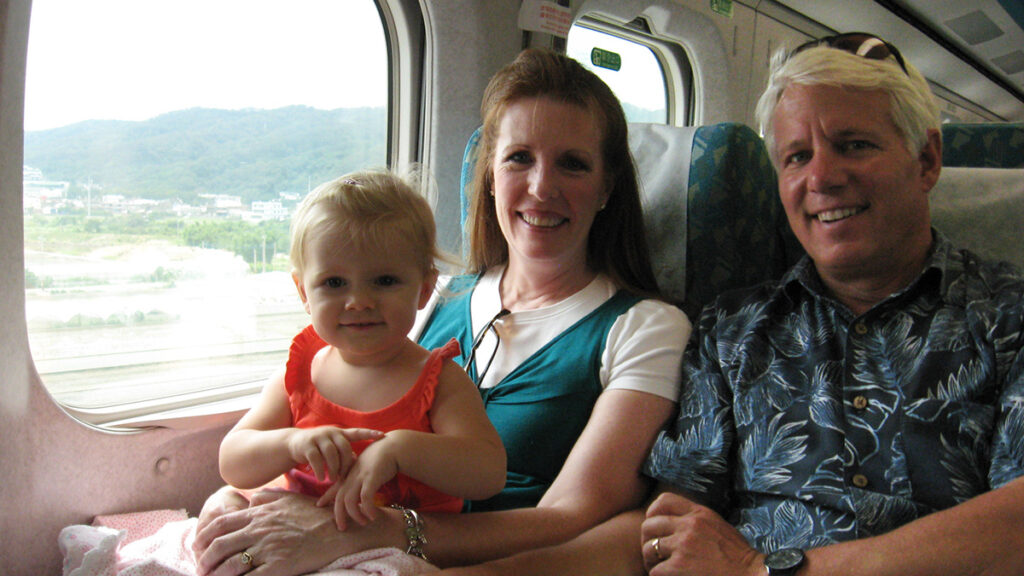I grew up along the Wasatch Front in Utah, which refers to the metro area along the west side of the Wasatch Mountain range that extends from roughly Provo in the south, with Salt Lake City in the middle, to Ogden in the north. This means I grew up almost directly on top of the notorious Wasatch Fault. From a very early age I was taught about geology, plate tectonics, earthquakes, and how the Wasatch Fault was a ticking time bomb. “It’s long overdue for a massive earthquake” was a common understanding amongst everyone I knew. How true that was (or still is), I have no idea. But the threat of “the big one” was a constant presence. And for a kid, that threat was always a little unnerving.
Many years later, I’m working in an office on the 9th floor in Taipei, Taiwan and I randomly started to feel dizzy. I looked up and the window shades were swaying back and forth. Then I noticed the book shelf was shaking a bit. Then it hit me: it’s an earthquake! It was exciting. And yet wholly uneventful. Most of my colleagues hadn’t even acknowledged it, but my adrenaline was pumping. I remember thinking “Is this it? Is this ‘the big one’?” I waited for the shaking to break open and all hell to break loose. But it didn’t. The little quake lasted for 15 to 20 seconds or so, then everything stopped moving and the world continued on like nothing happened.

Over the next few months I discovered that due to its location on top of the Pacific Rim of Fire, small earthquakes were a very common occurrence in Taiwan. And big ones are not uncommon either. That same shaking/swaying experience would play out a few times each month in the years I lived there. Sometimes they were big enough that they would knock pictures off the wall. But over time, I discovered (to my disappointment) that my sensitivity to them had also decreased. And thus the excitement of having the monotony of my day broken up by an unexpected adrenaline shot also decreased.
I hadn’t realized I had become desensitized to them until my parents were in town for a visit. One day as we were touring around my mom, who still lives in Utah and thus under the constant threat of “the big one” suddenly froze in her tracks, arms outstretched, and eyes as wide as basketballs. I couldn’t figure out what was going on until I finally felt it: a small earthquake. Just like all the others I had felt, it quickly came and went, and I was ready to keep walking to the next temple or market. But my mom had the adrenaline going and was not ready to move on so quickly without processing the near-death experience we all just had. Turns out, she wasn’t desensitized (unsurprisingly) and was still in the “this could be the big one” mentality I was in a few years before.

Now, what does this all have to do with the world of work that Interactive Workshops specialize in? And specifically, how does this relate to adult learning and behavior change? Here are my 3 main takeaways from this experience:
1. Learning from a book, a course, a podcast, YouTube, or any other source won’t replace experience.
I grew up learning all about earthquakes. We practiced drills, I knew about slip faults vs subduction faults, but nothing could truly prepare me for my first earthquake. I had to experience it. I had to feel it. So whether you are learning a new skill, or teaching others a new skill, look for opportunities to apply the learning to real situations that will be faced in the course of a day.
2. Confidence comes from doing. Not from learning.
Because of all my earthquake education, I felt I was prepared to know what to do and how to handle one. But when that first one hit, I was still scared. By the time the twentieth one hit, I was no longer scared. (Maybe naïve. Any one of them could have been “the big one” after all). As you or your learners experience applying the skills, their confidence will grow. It will be intimidating at first, but that intimidation will subside as experience and confidence grows.
3. Growth can happen imperceptibly over time.
Often we get frustrated that we aren’t growing or developing fast enough. In the moment, it feels like we are standing still. It’s only when we look back that we see the progress we’ve made. In this case, I had grown to not notice earthquakes. It hadn’t happened all at once, and I don’t even remember it happening at all. But it was when I was with someone who had not grown in this same regard that I realized how I had developed. This is especially true when it comes to skill building. We often can see an ideal for how that skill should be applied, then see the gap between us and the ideal. But when we take stock of where we are, and where we’ve come from, we can see the skills starting to build and new mental muscles taking shape.
